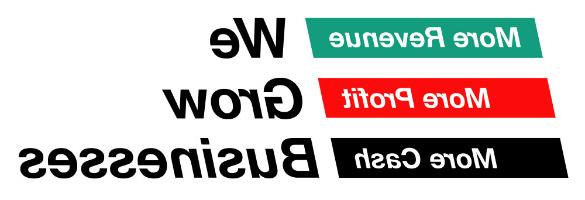If you want to improve bottom line business performance it isn’t always easy to know where to start. This simple rule of thumb can guide your thinking and help to boost profits.
Na minha experiência, a maioria dos proprietários de empresas de PME mantém um bom controle sobre o que gastam. De um modo geral, os empresários ficam de olho no saldo da conta bancária, apenas gastando quando e onde eles acreditam necessário. Eles realmente apreciam isso para melhorar o desempenho dos negócios da linha de fundo que precisam viver e respirar Lucro = Receita - Custos. Em alguns casos, encontramos empresas que estão fazendo bom uso de sistemas contábeis. Em outros casos, o controle financeiro equivalerá a verificar regularmente sua conta bancária on -line, além de algumas planilhas do MS Excel para realizar trabalhos como calcular o IVA. Sistemas de relatórios, muitas vezes há escopo para reduzir os custos. O dinheiro pode vazar sobre coisas como assinaturas não lidas / não usadas e atividades de marketing ineficazes. Empurramos nossos clientes a justificar cada libra que gastam, desafiando se as despesas realmente melhorarão o desempenho dos negócios da linha de fundo. Embora haja um pouco que possamos fazer com redução de custos sem gado, as maiores economias surgem quando perguntamos 'quais membros da equipe custam mais do que contribuem' e vice-versa. Definitivamente, não é a melhor das conversas, mas melhorar o desempenho dos negócios da linha de fundo significa que temos que fazer um pensamento frio e difícil. Isso significa que os 80% restantes do desempenho financeiro aprimorado devem vir da receita - então vamos discutir isso agora. Retorno.
When we start working with a business one of the first jobs we do is to get to grips with financials, including where money is being spent. In some cases we encounter businesses that are making good use of accounting systems. In other cases, financial control will amount to regularly checking their online bank account plus a few MS Excel spreadsheets to do jobs like calculating VAT.
If we want to improve bottom line business performance then we can divide the job into two parts – 1) reducing costs, and 2) increasing revenue.
Improve Bottom Line Business Performance by Reducing Costs
Even in businesses that make good use of financial reporting systems, there is often scope for reducing costs. Money can leak away on things like un-read / un-used subscriptions and ineffective marketing activities. We push our clients hard to justify every pound that they spend, challenging whether the expenditure will truly improve bottom line business performance.
In most cases the biggest fixed cost will be staff. Whilst there is a bit that we can do with non-staff cost reduction, the biggest savings come when we ask ‘which members of staff cost more than they contribute’ and vice versa. It’s definitely not the nicest of conversations to have, but to improve bottom line business performance means we have to do some cold, hard thinking.
It’s said that about 20% of the financial performance improvement can come from the cost side of the equation. This means that the remaining 80% of the improved financial performance must come from revenue – so let’s discuss that now.
Increasing Revenue to Improve Bottom Line Business Performance
We believe that revenue is a function of:
- Marketing – and the leads you generate.
- Sales – your ability to turn leads into customers.
- Repeat business – the frequency at which customers return.
- Preço - A quantidade de dinheiro cobrada por transação. Algumas indústrias naturalmente se prestam a repetir a compra, e outras não-por isso é difícil oferecer conselhos de tamanho único aqui. Simplesmente medir o número de leads gerados pela fonte, definir metas e monitorar o desempenho contra o Target é um ótimo primeiro passo. Da mesma forma, calcular com precisão a taxa de conversão de vendas e o desempenho do monitoramento todos os meses é essencial para melhorar o desempenho dos negócios da linha de fundo.
Anecdotally, we tend to find that small business owners have a pretty good idea of what they should be charging for their products and services. Some industries naturally lend themselves to repeat purchase, and others don’t – so it’s hard to offer one-size-fits-all advice here.
The areas that are often most fruitful for boosting revenue are marketing and sales. Simply measuring the number of leads generated by source, setting targets and monitoring performance against target is a great first step. Likewise, accurately calculating sales conversion rate and monitoring performance every month is essential to improve bottom line business performance.


